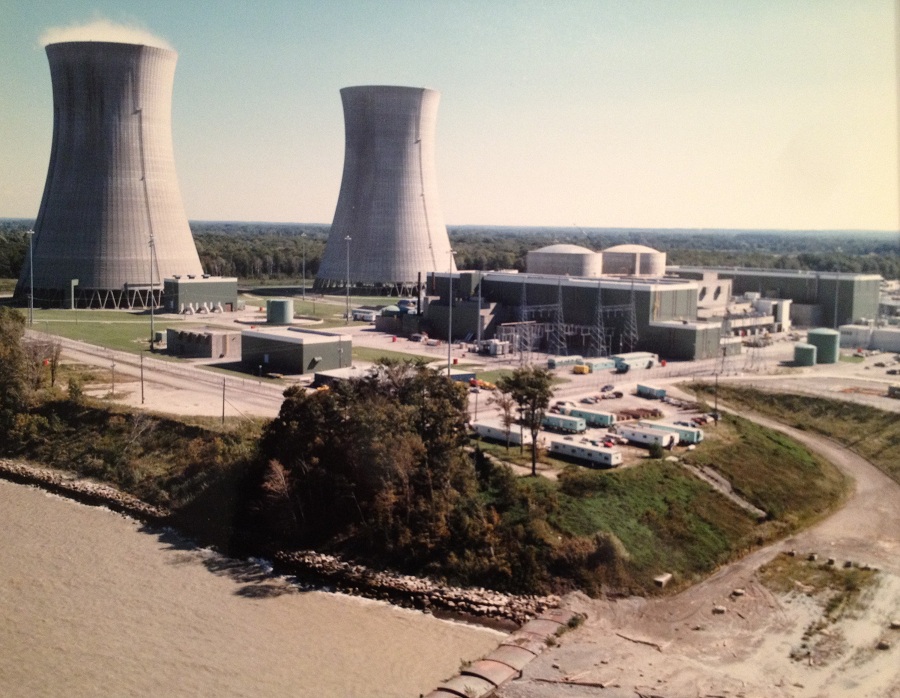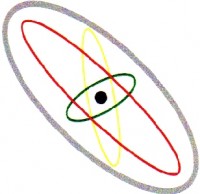Get Involved in Nuclear Science Week
By Jim Walther, Executive Director of the National Museum of Nuclear Science & History; Chair of the Nuclear Science Week International Steering Committee
The ANS Nuclear Cafe is a blog owned and edited by the American Nuclear Society. Information contained on the ANS Nuclear Cafe has been provided by numerous sources. Therefore, the American Nuclear Society assumes no responsibility or liability for the accuracy of information contained herein. DISCLAIMER: The views expressed in posted articles do not necessarily reflect the views of the American Nuclear Society. The views expressed here are those of the individual authors. ANS takes no ownership of their views. The American Nuclear Society assumes no responsibility or liability for any use or operation of any methods, products, instructions, or ideas contained on this site.

A message from Chapman Nuclear
New Lattice Confinement Fusion Power Reactors May Eliminate 95% of SNF
By Jim Walther, Executive Director of the National Museum of Nuclear Science & History; Chair of the Nuclear Science Week International Steering Committee

Perry Nuclear Plant in Ohio. Nuclear plants create no emissions of their own; the cooling towers emit only water vapor. Press photo in Will Davis collection.
One of the things that's important to consider this week - National Clean Energy Week - is whether or not energy sources we depend upon are actually clean. While we think of solar and wind energy as being pretty clean, we are also reminded that they are not reliable, and they do experience periods of time when they just don't work. What we use to fill in that power gap is from sources we can control, independent of weather or time of day. These are sources we call "dispatchable" generating sources, because we can dispatch them and expect they'll answer the call to provide power.
Fourth in a series of videos recorded at the ANS Annual Meeting, San Francisco, June 2017
INL Neutron Radiography Reactor re-irradiates fuel to enable safety analyses

Florida Power and Light's St. Lucie nuclear plant; photo courtesy FPL
Hurricane Irma shocked the country this week with images of wind and water that haven't been seen in some time along the hurricane-wary coastlines of the United States. Although people in those regions always have preparation for these storms somewhere in their minds, the two Florida Power & Light (FPL) nuclear plants-both of which powered through the hurricane-had both a background of design and preparedness to stand on as well as some recent, last-minute preparations.
Concerns about global warming and water scarcity have motivated many researchers to consider the potential for nuclear desalination, i.e., integrating a desalination plant with a nuclear power plant, as a means of producing drinkable water. There are numerous benefits to integrating a desalination plant with a nuclear power plant such as carbon-free electricity, low-marginal cost of generating electricity compared to fossil fuels, and a consistent power supply, unlike intermittent renewable electricity sources like wind and solar. Nearly 46 percent of the world's nuclear power capacity is within fifty miles of a coast according to data from the World Nuclear Association. In the U.S., several nuclear power plants are located near the coasts in states such as California and Florida where large-scale desalination plants have been constructed in the last decade. Thus, for locales with existing nuclear power plants and sufficient demand for desalinated water, nuclear desalination is an attractive option.
In a world fraught with loud, anti-nuclear voices, including a recent satirical news show that had a bit on nuclear waste, I've been pondering ideas that would provide a media platform to help counter the attacks on nuclear. While I am still a penniless grad student who lacks the budget of a weekly HBO nightly show, I believe I may have found a compromise. Starting today, Friday, September 1, 2017, I will be launching the bi-weekly podcast RadioNuclear.
(This is a breaking news story. This post will be updated as information is available; scroll down for the latest updates and additions.)
People are bad at evaluating risks-especially from artificial, exotic, or invisible sources. When it comes to radiation, most people are not only bad at evaluating risks, but can be irrational to the point of being phobic about them. Interestingly, many of those who are frightened of radiation do understand that it's part of the environment-they're just scared of artificial radiation, mistakenly thinking that it's somehow different from natural radiation. One of my colleagues at the Ohio Department of Health took a phone call from a worried citizen in the early 1990s and tried to explain that the radiation exposure they were concerned about (from Ohio's uranium enrichment plant) was actually less than the radiation from a cross-country flight. "Yeah, but that's that good cosmetic radiation" was the caller's answer, to which my colleague simply replied with a sigh.
On Sunday night, the brilliant comedic satirist, John Oliver, presented a very funny, if basically wrong, segment on nuclear waste.
(Third in a series of videos recorded at the ANS Annual Meeting, June 2017 in San Francisco)
The next few years mark a turning point for commercial nuclear power in the United States, because after that there will be only a decade until 2030. That is when some fraction of the nation's aging nuclear fleet built in the 1970s and 1980s is expected be decommissioned when renewed licenses run out. Nuclear plants in the United States originally were given 40-year licenses and most have been renewed, and those expire in the 2030-2050 time range. Of course, this also assumes some plants cannot attain a second license renewal. If construction of new reactor units is not started soon, the existing plants could be shuttered before any new units come online. That is based on the 15-year construction timeline it takes for new nuclear construction in the U.S. This will have the unfortunate impact of leaving the nation without some of its reliable, clean, base-load energy that the country has relied on to provide 20-30 percent of its electrical generating capacity for the past 40 years.
The Democratic People's Republic of Korea (DPRK), often referred to as North Korea, is testing ballistic missiles capable of reaching California with a miniaturized atomic warhead. Neither component is fully developed yet.
In June, Bob Coward became the 63rd president of the American Nuclear Society. Watch this short introduction video where Bob talks about his career, his thoughts on the future of nuclear, and how it fits into the needs of the world.
Imagine you've walked into a restaurant and are at the counter to order. You notice, but think nothing of the fact, that there appears to be two order windows and possibly two separate kitchens. You order a cheeseburger, expecting American cheese and ketchup (among other things), but what you get has mustard and Swiss. When you make a comment about it, you're told that "cheese is cheese" and nothing more is said. Two items-mustard and Swiss-weren't ordered, but one was-a cheeseburger-and so you eat it.
Editors note: Today's video is second in a special series filmed in June at the American Nuclear Society's Annual Meeting held in San Francisco, Calif. this past June.
Do you know of a science journalist whose writing stands out in capturing your interest? This year, the American Nuclear Society (ANS) Communications Committee is launching the Darlene Schmidt Science News Award named for one of ANS's most dedicated and beloved employees from the 1980s to the early '90s. The purpose of this award is to acknowledge journalists and reporters who provide accurate, innovative, and well-researched science coverage for the general public. Being able to effectively communicate scientific ideas and the merits of nuclear energy to the general public is vital to the success of ANS. To encourage accurate scientific journalism, this award will acknowledge a writer who embodies these important characteristics.
Yesterday, a rapid series of events led to the announcement that the expansion of the V. C. Summer nuclear plant, comprising two AP1000 units (Units 2 and 3), would be cancelled. Details and some of the developments leading to the decision are herein discussed.
 The last half of the 1950s was a time of great promise for the concept of atomic-powered commercial ships. The idea was given real political momentum (which it very much needed) in 1955 when President Eisenhower formally proposed construction of such a ship by the United States. In July 1956, Congress passed Public Law 848, authorizing the actual engineering and construction of the ship.
The last half of the 1950s was a time of great promise for the concept of atomic-powered commercial ships. The idea was given real political momentum (which it very much needed) in 1955 when President Eisenhower formally proposed construction of such a ship by the United States. In July 1956, Congress passed Public Law 848, authorizing the actual engineering and construction of the ship.
(This post is the first of a series showing presentations given at the American Nuclear Society's 2017 Annual Meeting, held in San Francisco in June.)